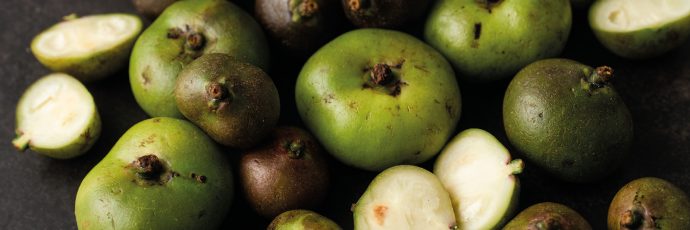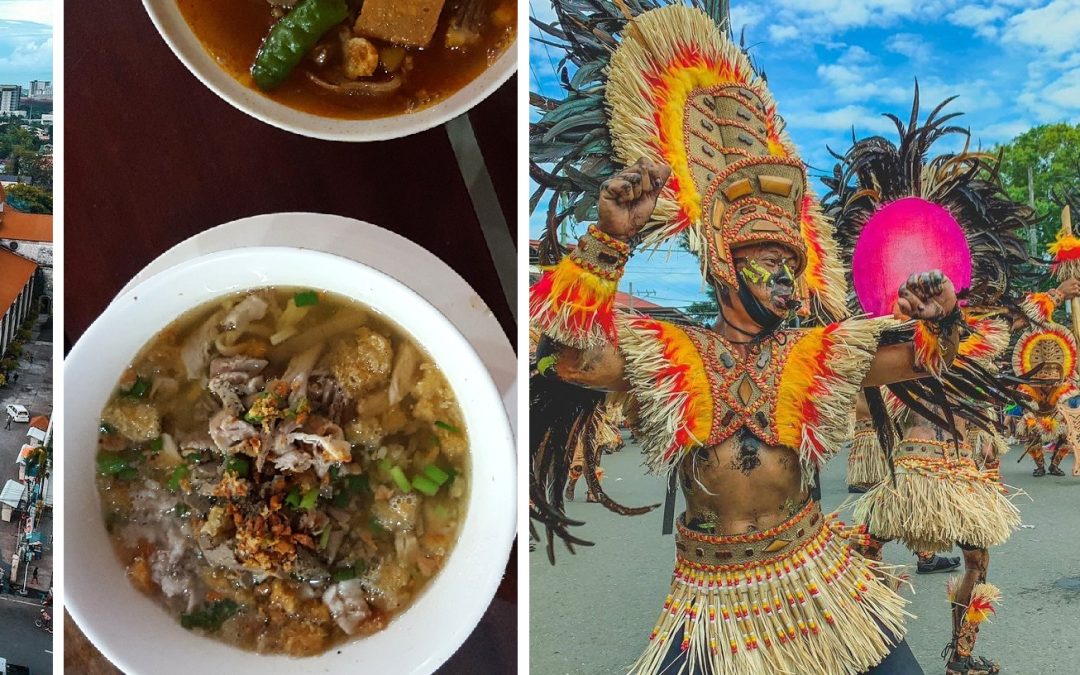Tasting Cities: A series featuring the local cuisine, people and places, and everything food

(L-R): Iloilo City – (Janssen Panizales|pexels.com); La Paz batchoy (@bimby_eats); Dinagyang Festival (@jerrytrenasofficial|iloilo city.gov.ph); and Molo soup – (simplybakings.com)
The City of Iloilo has been named a UNESCO City of Gastronomy in the latest UNESCO Creative Cities Network (UCCN) for 2023. The list was revealed on World Cities Day, adding 55 cities covering the seven creative fields of crafts and folk art, design, film, gastronomy, literature, media arts, and music.
So far, only two other cities in the Philippines have become part of this creative network – Baguio for Crafts and Folk Arts in 2017; and Cebu for Design in 2019. Iloilo is the first Philippine city to represent under Gastronomy.
Though arguments can be had about better cuisine or more popular food in other places, Iloilo City fits the mold as it offers a clear representation of its people, history, and overall culture in the popular Ilonggo dishes it has been known for through the years. Dishes like the eponymous La Paz Batchoy and Pancit Molo, the Chicken Inasal, and KBL, which is short for kadyos (pigeon pea), baboy (pig/pork), and langka (jackfruit, preferably unripe), have become part of the country’s mainstream food culture – from everyday fare one can eat off a busy side street to even a lavish tablescape at a family gathering or wedding.

Images courtesy of (l-r): KBL – ilonggocook.wordpress.com (Sachi Villareal Photography); kadyos – www.negrosseasonofculture; and langka – Denniz Futalan (www.pexels.com/photo/close-up-photo-of-jackfruit-12394073/).
Just as the many iterations of adobo and sinigang bring distinct identities of Filipino home, family, and traditions, Iloilo’s food creations are a must-try for any foodie or curious mind wanting a taste of Philippine pride. Moreover, many of these dishes subscribe to the UCCN narrative.
Video credits: https://www.youtube.com/watch?v=O7KbFR4R-Jo
According to UNESCO Director-General Audrey Azoulay, “The cities in our Creative Cities Network are leading the way when it comes to enhancing access to culture and galvanizing the power of creativity for urban resilience and development.”
For instance, the kadyos in KBL is one of the country’s resilient crops known to withstand the ever-growing challenges of climate change and food security, with its low-maintenance nature and effective soil-enriching properties due to its nitrogen-fixing ability. When not used for human consumption, said legume is used as livestock feed, as well.
This dish also demonstrates how regional identity is reflected in the food we eat. Instead of tasting the usual Philippine lime (calamansi) or tamarind, the souring ingredient in KBL is called batuan or batwan (fruit or paste form), an indigenous fruit crop that grows abundantly in the Visayan islands of Negros and Panay, to which Iloilo belongs. And even though KBL only has three main ingredients, its unique sour taste easily identifies with the country’s familiar flavor senses. As batuan is not typically sold in food markets outside the region, the good news is that batuan is also processed as a ready-to-use/eat product offered to global markets through ifexconnect.com, a digital sourcing platform for premier quality food products and ingredients.

Batwan fruit (Garcinia binucao) is typically used as a souring agent in Visayan cuisine. When preserved, it can also stand as an appetizer. Photo credit: Slow Food Foundation for Biodiversity (https://www.fondazioneslowfood.com)
According to UCCN, the network’s common objective is placing creativity and cultural industries at the heart of their development plans at the local level and cooperating actively at the international level. As Philippine cuisine continues to gain its overdue place at the global table, having a city like Iloilo represent Philippine food, culture, and future thinking in a place of privilege and connections is a cause we can all get behind.
Iloilo now joins the almost 300 designated creative cities around the world from the programme’s inception in 2004.
Want to try these Filipino dishes, but don’t know where to start? Check out ifexconnect.com for some of the food, beverage, and other ingredients available for export to help you get started.


Recent Comments